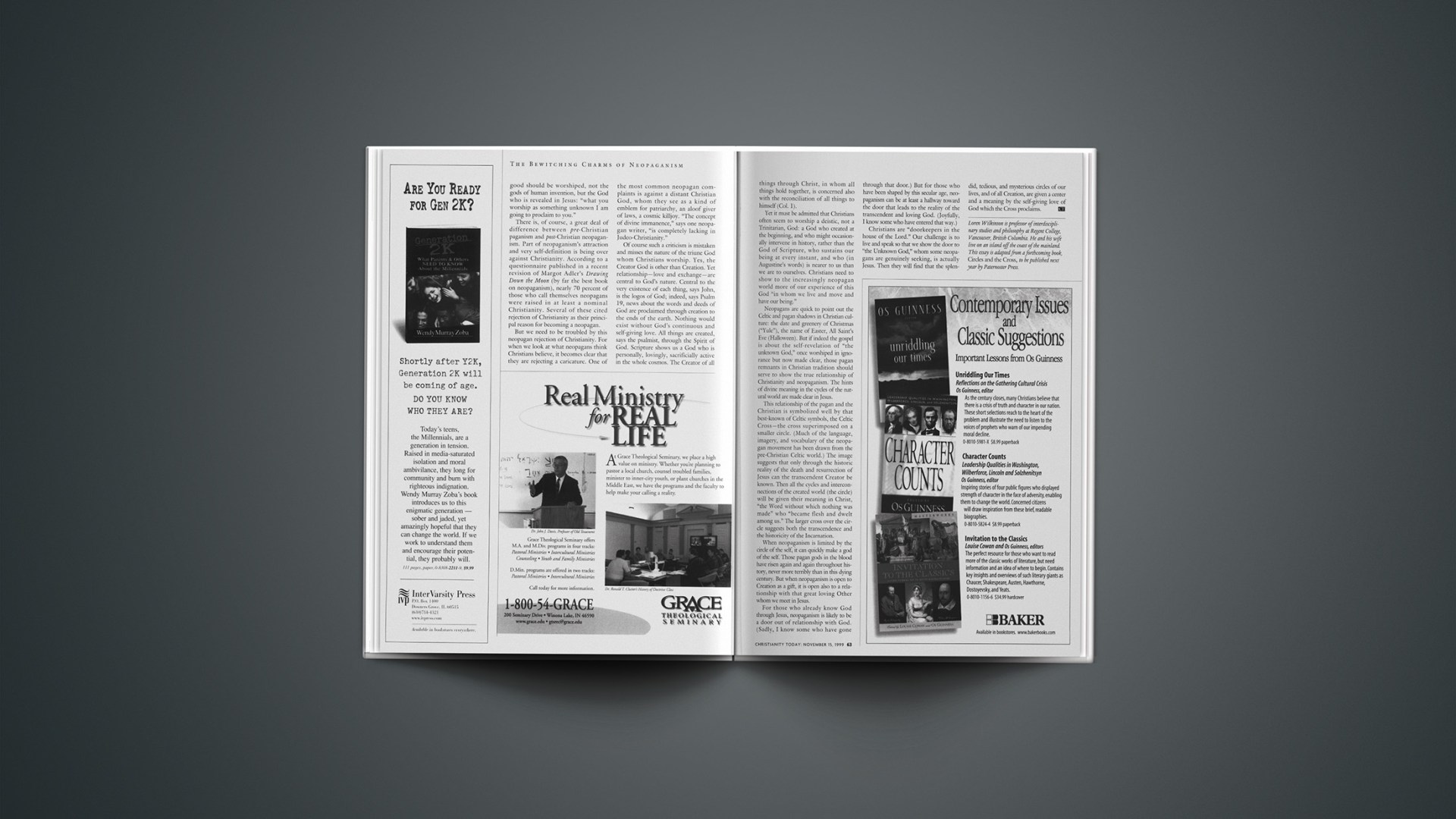Many evangelicals live in a very strange world, a sort of dark Dr. Seuss landscape in which peaceful places can shift hazardously at a moment’s notice. At times, the landscape is fairly flat and stable. Lots of different people and communities and ideas and concerns can exist together, with good-natured exchanges all ’round, including even the occasional sincere and civil disagreement—a sort of Serengeti water hole. But sometimes the ground transforms abruptly, and evangelicals find themselves perched on top of a steep mountain of truth. From here, any step away is a step down. Worse, any step risks a calamitous slide all the way down a slippery slope to wreckage on the opposite deadly danger below.
 More than 12 million people are at risk of starvation in Ethiopia, Kenya, Somalia, and other parts of East Africa, equivalent to the population of Ohio or Florida. Hundreds of thousands refugees have fled the drought-stricken region, and in the past three months, nearly 30,000 children have died. Yet the crisis has raised little attention in America. Private relief agencies are facing record low donations. The federal government is cutting its budget for humanitarian aid. And few Americans report even paying attention to the disaster.Even though the need is great, some relief organizations are finding it difficult to raise the funds needed to assist the area. Jeff Palmer, executive director of Baptist Global Response, said the Southern Baptist international relief fund is operating with just enough funds for six months. Contributions from Southern Baptist churches to the fund in 2010 were the lowest in 20 years, with the fund receiving only 40 percent of what it did just a year earlier.“We are now at a ‘red alert’ time for our human needs funding,” Palmer said. “These projects help the poorest of the poor, the most neglected and marginalized and some of the most lost people groups in the world. We are approaching a baseline where we are going to have to start denying funds to critical projects.”Secretary of State Hillary Clinton announced that the U.S. is sending 2 million to the region, bringing the total U.S. assistance to the region to more than 0 million to help with food distribution, nutrition, clean water, sanitation, healthcare, and security. Overall, around 4.6 million people are assisted through U.S. funds.“What is happening in the Horn of Africa is the most severe humanitarian emergency in the world today, and the worst that East Africa has seen in several decades,” Clinton said last week at the International Food Policy Research Institute.USAID recommends that those who would like to help the victims of the famine should contribute directly to one of the relief organizations already working in the region.The listed organizations include World Vision, which has relief operations in northern Somalia, Kenya, and Ethiopia, according to Mike Weickert, director of humanitarian and emergency affairs at World Vision. It plans on setting up an additional response center in southern Somalia, near the border between Somalia and Ethiopia. The Office of the United Nations High Commissioner for Refugees (UNHCR) estimated that up to 140,000 Somali refugees have trekked through this region this year.“Our World Vision assessment team visited Dolo last week and was struck by the extremely harsh conditions,” said Weickert. “We met mothers who had delivered babies along the way, including one who had given birth on the hood of a car. Children are visibly ill and weak and urgent action is necessary to ensure their survival.”Samaritan’s Purse is another relief organization working on the ground near the Somali border in Kenya, providing food, water, and other necessities. The relief organization is also running a work-for-pay program that provides employment for those in the area. Members of its staff report seeing animals left to die writhing on the ground, people walking miles just to get water to carry home, and families living in harsh conditions within refugee camps.Government programs are facing cuts with the recent discussions over the national debt. Former U.N. ambassador Tony Hall wrote on Sojourners’ God’s Politics blog about how Congress is considering cuts to its food aid programs, programs that would help in the Horn of Africa. In April, the House passed a budget that made severe cuts to food, nutrition, and other relief programs. The budget included a 41 percent cut to U.S. disaster assistance programs, a 43 percent cut in funding for the Global Fund for HIV/AIDS, and a 30 percent reduction in international food programs.“Some of America’s political leaders are considering budget cuts that would make it all but impossible for us to respond to crises like these in the future,” Hall said. “Why are they cutting funding for emergency food aid in the middle of a famine? In 1984, people of faith and conscience said ‘never again.’ It’s time for America to start living up to this promise.”Support for federally funded programs and donations to nonprofit relief organizations may remain low, however, unless Americans start paying attention to the news about the famine. The Pew Research Center for the People and the Press reported Wednesday that a minority of Americans even feign attention to the famine. Only 15 percent reported that they had been closely following the news about the food shortage in Somalia; twice as many paid close attention to the stock market. And while only 4 percent in the Pew survey said Somalia was the story they were following the most, five times as many Americans said the stock market was their top story.Former U.S. Senator Bill Frist, R-Tenn. recently returned from visiting refugee camps in Kenya, part of a U.S. delegation that included Jill Biden, wife of Vice President Joe Biden.“A lot of people don’t realize, especially in this environment of what’s happening in terms of the economy here and at home, that this is the most acute food security emergency anywhere in the world now and in recent years,” said Frist.Copyright © 2011 Christianity Today. Click for reprint information.Related Elsewhere:Previous coverage of world hunger includes:
More than 12 million people are at risk of starvation in Ethiopia, Kenya, Somalia, and other parts of East Africa, equivalent to the population of Ohio or Florida. Hundreds of thousands refugees have fled the drought-stricken region, and in the past three months, nearly 30,000 children have died. Yet the crisis has raised little attention in America. Private relief agencies are facing record low donations. The federal government is cutting its budget for humanitarian aid. And few Americans report even paying attention to the disaster.Even though the need is great, some relief organizations are finding it difficult to raise the funds needed to assist the area. Jeff Palmer, executive director of Baptist Global Response, said the Southern Baptist international relief fund is operating with just enough funds for six months. Contributions from Southern Baptist churches to the fund in 2010 were the lowest in 20 years, with the fund receiving only 40 percent of what it did just a year earlier.“We are now at a ‘red alert’ time for our human needs funding,” Palmer said. “These projects help the poorest of the poor, the most neglected and marginalized and some of the most lost people groups in the world. We are approaching a baseline where we are going to have to start denying funds to critical projects.”Secretary of State Hillary Clinton announced that the U.S. is sending 2 million to the region, bringing the total U.S. assistance to the region to more than 0 million to help with food distribution, nutrition, clean water, sanitation, healthcare, and security. Overall, around 4.6 million people are assisted through U.S. funds.“What is happening in the Horn of Africa is the most severe humanitarian emergency in the world today, and the worst that East Africa has seen in several decades,” Clinton said last week at the International Food Policy Research Institute.USAID recommends that those who would like to help the victims of the famine should contribute directly to one of the relief organizations already working in the region.The listed organizations include World Vision, which has relief operations in northern Somalia, Kenya, and Ethiopia, according to Mike Weickert, director of humanitarian and emergency affairs at World Vision. It plans on setting up an additional response center in southern Somalia, near the border between Somalia and Ethiopia. The Office of the United Nations High Commissioner for Refugees (UNHCR) estimated that up to 140,000 Somali refugees have trekked through this region this year.“Our World Vision assessment team visited Dolo last week and was struck by the extremely harsh conditions,” said Weickert. “We met mothers who had delivered babies along the way, including one who had given birth on the hood of a car. Children are visibly ill and weak and urgent action is necessary to ensure their survival.”Samaritan’s Purse is another relief organization working on the ground near the Somali border in Kenya, providing food, water, and other necessities. The relief organization is also running a work-for-pay program that provides employment for those in the area. Members of its staff report seeing animals left to die writhing on the ground, people walking miles just to get water to carry home, and families living in harsh conditions within refugee camps.Government programs are facing cuts with the recent discussions over the national debt. Former U.N. ambassador Tony Hall wrote on Sojourners’ God’s Politics blog about how Congress is considering cuts to its food aid programs, programs that would help in the Horn of Africa. In April, the House passed a budget that made severe cuts to food, nutrition, and other relief programs. The budget included a 41 percent cut to U.S. disaster assistance programs, a 43 percent cut in funding for the Global Fund for HIV/AIDS, and a 30 percent reduction in international food programs.“Some of America’s political leaders are considering budget cuts that would make it all but impossible for us to respond to crises like these in the future,” Hall said. “Why are they cutting funding for emergency food aid in the middle of a famine? In 1984, people of faith and conscience said ‘never again.’ It’s time for America to start living up to this promise.”Support for federally funded programs and donations to nonprofit relief organizations may remain low, however, unless Americans start paying attention to the news about the famine. The Pew Research Center for the People and the Press reported Wednesday that a minority of Americans even feign attention to the famine. Only 15 percent reported that they had been closely following the news about the food shortage in Somalia; twice as many paid close attention to the stock market. And while only 4 percent in the Pew survey said Somalia was the story they were following the most, five times as many Americans said the stock market was their top story.Former U.S. Senator Bill Frist, R-Tenn. recently returned from visiting refugee camps in Kenya, part of a U.S. delegation that included Jill Biden, wife of Vice President Joe Biden.“A lot of people don’t realize, especially in this environment of what’s happening in terms of the economy here and at home, that this is the most acute food security emergency anywhere in the world now and in recent years,” said Frist.Copyright © 2011 Christianity Today. Click for reprint information.Related Elsewhere:Previous coverage of world hunger includes:
| A Pew Research Center survey suggests evangelicals prefer the government spend on schools, the military, and police. (February 18, 2011)
| The world produces more food than ever. So why do nearly a billion people still not have enough to eat? (November 7, 2008)
| Why some places suffer food shortages decade after decade. (May 11, 2007)
In the last couple of years, however, American evangelicalism has been wracked with controversy over a quite different issue. Now the question is so-called inclusive language translations, those versions that have changed some or all of the Bible’s use of generic masculine language to language that explicitly includes, or at least does not implicitly exclude, women. No more mankind or man or he who will and so on when all persons, not just males, are meant. Interestingly, when the New Revised Standard Version (NRSV) was released in 1989, some evangelicals were happy to use it as the first translation to apply such principles in a sweeping way, while most other evangelicals simply ignored it. The earlier battle over the RSV perhaps had sorted things out: you either liked and used the RSV or you didn’t, and the same would go for the NRSV.
The ground did not heave up until a significantly altered edition of evangelicalism’s most widely used modern translation, the New International Version (NIV), emerged in Great Britain in 1996, with a U.S. edition reported to be in the works. This magazine has traced the resulting controversy in its pages. Periodicals such as World magazine, Bible scholars such as Trinity International University’s Wayne Grudem, and popular leaders such as James Dobson sounded an alarm against what they saw to be a serious threat to—well, to what? Why had the rather peaceful plain of Bible translations—to each his own, there’s room enough for all—tilted into a sheer cliff down which one would tumble if one surrendered one’s position at the peak?
A spate of books has appeared to advise us in this situation. None are more helpful than two by conservative evangelical Bible scholars, Bethel Seminary’s Mark Strauss—Distorting Scripture? The Challenge of Bible Translation and Gender Accuracy (InterVarsity)—and Trinity’s Donald Carson—The Inclusive Language Debate: A Plea for Realism (Baker). Especially because both authors are at the same time experts in translation and personally committed to traditional viewpoints on gender relations, their moderate perspective on this issue deserves a wide hearing. They surely cannot be accused of—that is, of abetting—sloppy or duplicitous translation in the cause of feminism.
Strauss and Carson identify several realities that some of the zealots have failed to see clearly enough. First, they recognize that all translations have infelicities, and even outright errors. Despite our best intentions, even in committees (and sometimes especially in committees!), we human beings make mistakes. No translation is perfect. Second, they recognize that in the very nature of the case, translation is always approximate because no two languages can be converted exactly into each other. The exact word isn’t ever quite le mot juste.
Third, and perhaps most important, they recognize that translation of gender language is especially difficult nowadays because English usage is itself changing, and not changing everywhere at the same time in the same way. Some of us do use mankind, and others humankind. Some of us use he generically; others scrupulously say he or she; and still others switch back and forth between he and she. So the translator has unavoidable trouble trying to connect the fixed languages of biblical Hebrew and Greek with the moving target of contemporary English—one might even say, of contemporary Englishes.
Fourth, and perhaps most radically, Strauss and Carson recognize that some of us are making way too big a deal about relatively small changes. Yes, something is lost when a translation moves away from the image of the solitary godly person in Psalm 1 (“Blessed is the man who”) to the collective (“Blessed are those”). But how much, really? Enough to warrant blasting a Bible with a shotgun and mailing it back to the publisher? Enough to sanction threats to a Bible society if it doesn’t cease producing the offending version? Enough to justify the dismissal of a seminary professor involved in the translation project a year before his retirement? Enough to keep a new translation out of the hands of people who would welcome it both for their own reading and for sharing the gospel with friends who might be very sensitive to gender questions?
Carson describes the disproportionate reaction of some critics as “Bible rage.” What agenda could possibly be pressing people to such instant and insistent opposition? Some critics openly articulate their fear that such inclusive translations represent the not-so-thin edge of a feminist wedge that will lead next to feminine language for God (not just for human beings) and from thence to outright goddess worship.
To be sure, there have been some moderating noises from this camp. Yes, they allow, some changes can legitimately be made in translation where the original languages clearly mean—in their literal words, not just their phrases—to include both men and women. But they allow relatively few. Making too many, it seems, might set off an avalanche. Yet the revised NIV, which occasioned this latest ruckus, scrupulously avoids crossing the line from inclusive language for human beings to feminine language for God. Even the NRSV preface explicitly acknowledges that the one sort of change does not entail the other. Furthermore, since the Bible’s original languages themselves contain obviously feminine language about God, an extreme position on this matter (“let’s stay in this ditch so we don’t slide over into the other one”) is indefensible.
A previous generation of evangelicals worried over the RSV because they felt that great matters of the gospel were at stake. However right or wrong they were about this perception, that controversy seems much more important than the anti-inclusive language crusade today. It is simply not the case today that we are presented with translations that portray God as a goddess (though there is an odd thing called “An Inclusive Version” that uses “Mother/Father” to refer to God—though blessedly few churches have bought this New Testament for their pews). We are not presented with translations that try to “improve” on the Bible by conforming it to this or that ideology. The more-or-less level plain of legitimate translation alternatives has not in fact been turned into an all-or-nothing cliff face of “Christian” at the top versus “anti-Christian” at the bottom. We instead have been gifted with a range of translations by earnest Christian scholars who have aimed at the edification of the church and the evangelism of the world.
Frankly, when it seems evident that Jesus himself used an Aramaic paraphrase of the Old Testament (CT, April 26, 1999, “What Bible Version Did Jesus Read?” by Craig A. Evans, p. 98); when evangelicals enthusiastically support missionary Bible translators all over the world whose versions—because rendered by a few people with relatively few linguistic tools at hand—are always much less accurate than the English translations we are privileged to enjoy; and when hundreds of thousands of conservative evangelicals are buying and using such dynamic translations as the New Living Translation and such paraphrases as The Message—well, it’s difficult to believe that all of this sound and fury truly centers on the integrity of Bible translation.
So if it isn’t really about translation, then American evangelicals confront a hard question. Has the fervor in this latest battle for the Bible instead been aroused by the clash of social and political agendas? Have Bible-loving evangelicals, in fact, succumbed to the temptation to co-opt the dignity of God’s Word for something much less ultimate, much less certain, and much less glorious?John Stackhouse is the Sangwoo Youtong Chee Professor of Theology at Regent College, Vancouver, and author of Can God Be Trusted? Faith and the Challenge of Evil (Oxford University Press).










